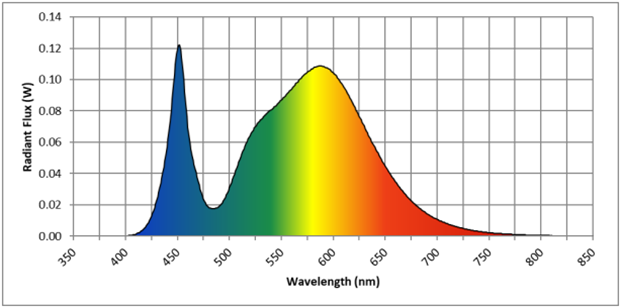Breadcrumb Navigation
- Lighting Insights
- Research & Trends
- Will LED Street lights Keep You Up at Night?
Will LED Street lights Keep You Up at Night?
Funded by the US Department of Energy, a new study by Virginia Tech Transportation Institute set out to look at the impact street lights have on melatonin levels.

Seven years ago, the American Medical Association (AMA) released guidance regarding LED street lights. While its guidance acknowledged the positive benefits of LED lighting – cost and energy savings, as well as the related lower reliance on fossil-based fuels, it also mentioned that some LED lights were harmful when used as street lighting.
Although legacy light sources also produce blue light, the AMA’s attention focused on the blue wavelength produce by LEDs and their potential impact on suppressing melatonin levels in our bodies – which could affect our sleep and health. AMA guidance encouraged the use of warmer color temperatures (3000K or lower, but it’s important to note that this guidance was not blindly accepted upon its release and critics from both the lighting and energy communities questioned some of the AMA’s approach which led to its recommendation.
Connecting the Dots
First, some background. Almost all LEDs used for general illumination begin by producing blue light. In order to convert some of this blue light to other colors, phosphors are added, which impacts both the overall color appearance of the light source, as well as the level of color quality (accuracy) that is delivered.


Below is a Spectral Power Distribution Curve for a typical 4000K street light. The blue spike is produced by the Blue LED, and the rest of the color spectrum is created through phosphor conversion.


And here is a Spectral Power Distribution Curve for a typical 3000K street light. All things being equal, to get warmer color light, more blue light needs to be converted away from blue to other colors.


How does this relate to melatonin levels?
Melatonin is a hormone naturally released in the brain that helps regulate our 24-hour sleep-wake cycle. It is naturally suppressed during the daytime and is triggered by darkness, released to invite sleep, which is important for good health. Melatonin levels are influenced by light levels, the timing in which light is delivered, the duration of light exposure, as well as spectrum (wavelength). Melatonin suppression is more sensitive to blue wavelengths, hence the blue light concerns raised – could “blue-rich” LED street lights suppress melatonin levels at night, negatively impacting our sleep, and health?

So, Do LED Street Lights Impact Melatonin Levels? New Research Says No.
Funded by the US Department of Energy, Virginia Tech Transportation Institute set out to study the impact outdoor roadway lighting had on melatonin levels for drivers, pedestrians and those experiencing light trespass in their homes. Utilizing their Smart Road, Virginia Tech Transportation Institute exposed these several groups to various color temperatures produced from street lights, including High Pressure Sodium (2100K), as well as LED (2200K, 3000K, 4000K and 5000K) and compared these results to a “no roadway lighting” condition. They published their findings in November 2022, quoting:
“…for the night-time exposure periods tested at recommended roadway exposure levels, as compared to a no roadway lighting condition, the spectrum of the light source made no impact on salivary melatonin level in healthy subjects.”
Also noteworthy is that the Virginia Tech Transportation Institute’s findings were the result of measured data, based on recommended roadway light levels, while also carefully considering timing and duration of exposure, as well as spectrum. Their study also notes the AMA’s guidance relied on calculated estimates for its data and only considered spectrum – not considering the other three elements that can influence melatonin levels (light level, timing and duration).
Link to Full Study
https://www.mdpi.com/2624-5175/4/4/49
Where Do We Go from Here?
Although it’s great this study found no evidence that LED street lights, even those with higher color temperatures, had an impact on melatonin levels, it does not mean there shouldn’t be thoughtful consideration around appropriate CCTs for our outdoor environment. In fact, in April 2020 the IES (Illuminating Engineering Society) and IDA (International Dark-Sky Association), which recently updated its name to simply, DarkSky, collaborated and adopted Five Principles for Responsible Outdoor Lighting. One of their principles is to use warmer color lights where possible, as cooler light sources with higher blue content scatter more, contributing to increased light pollution. It is also worth noting that this guidance stopped short of a specific recommendation in terms of CCT, as some applications may benefit from higher/cooler color temperatures.
Beyond the color temperature discussion, today there is a much greater understanding of light’s broader impact at night, and most acknowledge that we can and should do better when it comes to lighting our outdoor environment. Light pollution is a real concern and certainly has a negative impact on all that are exposed to it, including plants and animals (flora and fauna). There is also increased awareness around glare, and a desire by many to deliver greater visual comfort to our outdoor spaces at night.
LED luminaires have delivered on the promise of significant energy and maintenance savings, but often at the expense of comfort – too narrowly defining value only in economic terms. The good news is we are expanding how value is defined, and much work in the industry is building towards improving the lit experience after dark.
To that end, Cree Lighting recently released its latest patented optical system, NanoComfort® Technology, delivering exceptional energy performance and optical control, while also elevating visual comfort in the outdoor space – something very uncommon from typical LED luminaires. Offered in multiple product platforms, including the recently launched Guideway™ Series street light and OSQ Series C area light, NanoComfort® Technology is helping redefine what’s possible in street and area lighting, lighting a better way for everyone.
